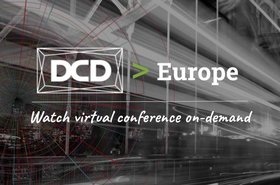October saw two major news stories about the UK’s energy supply break. At the beginning of the month, the government announced a pledge for a clean energy revolution, which aims to power every UK home by wind within 10 years. This promise was followed by an announcement from the National Grid, which warned of short supplies of electricity. The cause? A combination of unplanned power outages and unusually low wind speeds.
Grid challenges
Within one month, the benefits and challenges facing wind power have been highlighted. It is clear it has a very important role in helping the UK realize a green energy agenda. However, the nature of wind power means levels are intermittent and, as a result, can not always be relied upon.
It also shows the impact this has on the UK’s grid infrastructure. Earlier this year, Aggreko surveyed 700 data center consultants from across Europe and found that reliance on local grid infrastructure is low. In the survey, more than half expressed at least some concern about their local energy grid. Additionally, 60 percent claimed that grid limitation was among one of the main causes of power outages at their facility.
These results were from across Europe, but when diving a bit deeper into the responses from 100 consultants based in the UK, there are greater concerns. 72 percent had at least some concern on local grid and energy infrastructure’s ability to meet current and future demand (the European average was 55 percent).
It is clear there is a grid supply issue and data center operators should be looking towards alternative solutions, if they aren’t already. This month’s announcement from National Grid was not the first this autumn, and it’s unlikely to be the last, highlighting the growing risk industry faces when relying on the local grid infrastructure.
Decentralized energy solutions – or on-site generation - may offer an answer. Enabling users to generate energy on-site and lessen overreliance on the national grid, technologies such as solar power, combined heat and power (CHP) and battery storage, offer security of supply while lowering overall carbon emissions. Another of these possibilities is wind power, however, we can already see this is not without its challenges.
An issue not blowing over
The ‘unusually low levels’ of wind power, which contributed to National Grid’s latest announcement, is not a new trend. In August, periods of hot weather had a profound effect on the levels of wind power generation. According to WindEurope, the European weekly power generation dipped below 30 GW following high temperatures across Western Europe.
These dips in wind generation could become more frequent, especially if volatile weather patterns continue. Yet, despite this, more data centers are turning towards wind as an alternative power source.
According to the aforementioned survey of data center consultants, 65 percent confirmed that wind power was being adopted in facilities, with respondents from the UK matching this Europe-wide consensus (66 percent). While the industry faces pressure to move towards renewable energy – whether as a result of easing reliance on the local grid supply or driving towards net zero – questions continue to rise on the resilience of data centers.
How, then, can data center operators effectively implement wind power?
On-site generation
Decentralized energy solutions offer a solution to remove reliance on the grid, freeing up the stretched energy supply. However, one challenge to overcome is the cost associated with implementing the long-term strategy. Overcoming capex constraints – which are arguably even tighter as a result of the Covid-19 pandemic- is a challenge.
One solution could be ‘bridging gap’ solutions, which can ensure that any plans to implement on-site generation are both successful and cost-effective. If UK industry is to successfully implement a wind energy strategy, bridging gap solutions will be critical.
Battery storage is one option which could support this, and it is growing in prominence across the market. While it is not a new concept, it is still costly for many companies to purchase on an industrial scale. However, the good news is that it is more accessible now, when compared to three years ago, thanks to progress made in the rental space.
Battery solutions can help alleviate technical difficulties associated with early-stage decentralized energy schemes, mitigating issues such as low and transient loads, alongside voltage and frequency fluctuations. Supporting the adoption of renewables, it provides exciting opportunities for data centers, enabling it to avoid potentially catastrophic impact of energy fluctuations.
For data center operators, fully integrated, plug-and-play battery storage solutions offer much-needed breathing space to plan for a robust energy supply and energy supply is consistent, even when the local grid is struggling to supply.





